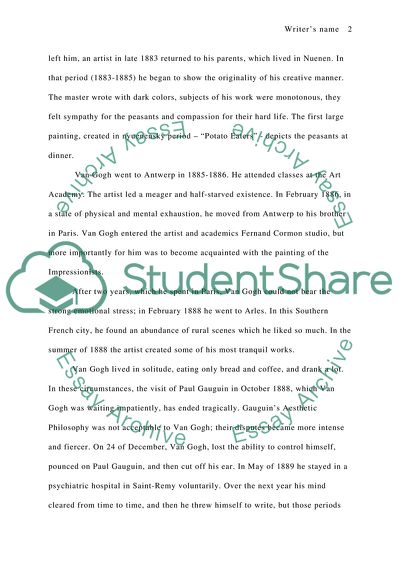Cite this document
(Vincent Van Gogh: Life and Works Term Paper Example | Topics and Well Written Essays - 1750 words - 1, n.d.)
Vincent Van Gogh: Life and Works Term Paper Example | Topics and Well Written Essays - 1750 words - 1. Retrieved from https://studentshare.org/people/1752424-vincent-van-gogh
Vincent Van Gogh: Life and Works Term Paper Example | Topics and Well Written Essays - 1750 words - 1. Retrieved from https://studentshare.org/people/1752424-vincent-van-gogh
(Vincent Van Gogh: Life and Works Term Paper Example | Topics and Well Written Essays - 1750 Words - 1)
Vincent Van Gogh: Life and Works Term Paper Example | Topics and Well Written Essays - 1750 Words - 1. https://studentshare.org/people/1752424-vincent-van-gogh.
Vincent Van Gogh: Life and Works Term Paper Example | Topics and Well Written Essays - 1750 Words - 1. https://studentshare.org/people/1752424-vincent-van-gogh.
“Vincent Van Gogh: Life and Works Term Paper Example | Topics and Well Written Essays - 1750 Words - 1”, n.d. https://studentshare.org/people/1752424-vincent-van-gogh.


